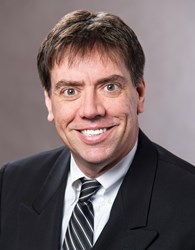Eli Lilly Looks Ahead To 2014 And Beyond
By Ed Miseta, Chief Editor, Clinical Leader

If you have read any of the coverage of Eli Lilly by some in the pharmaceutical press, you would already be selling the stock or shorting as many shares as possible. Sensationalized articles about the patent cliff, coming drops in revenue, and Phase III disappointments would have even the most confident of stockholders feeling squeamish. At the recent media and investor meetings held at Lilly headquarters in Indianapolis (October 2nd and 3rd), the company sought to convince members of the investor and pharmaceutical communities that it has a strong pipeline of molecules and is ready to take on the challenges that lie ahead.
I felt honored to be invited to this event, along with Life Science Leader chief editor Rob Wright, and media members from Scrip Intelligence, The Wall Street Journal, Indianapolis Business Journal, and local news networks, to learn more about the company’s plans. The access we had to top executives such as John Lechleiter, chairman, president, and CEO, Jan Lundberg, EVP of science and technology, Derica Rice, EVP of global services and CFO, and others made the visit an enjoyable and informative event.
 |
| Ed Miseta (R) with Rob Wright, chief editor of Life Science Leader magazine, during visit to Eli Lilly, 10/3/2013. |
So what does the future hold for Lilly? There is no question the company will face challenges from medicines coming off patent. The company stands to lose substantial revenue from the patent expirations of just two, Cymbalta and Cialis. However, the company believes its pipeline of molecules will allow it to make up those revenues. As Lechleiter pointed out in his opening comments during the investor meeting, Lilly had seven molecules in Phase II and Phase III trials in 2004. Today the company has 13 molecules in Phase III testing and another 26 in Phase II. The molecules cover Lilly’s breadth of therapeutic areas, including Alzheimers, diabetes, oncology, animal health, and bio-medicines. Jeff Simmons, SVP and president, Elanco Animal Health, notes it is hard to find an area in which Lilly is not involved.
The company’s executives were clear about the path the firm must pursue to remain successful. In the must-win category, the five areas cited were innovation, China, diabetes, expansion, and business development. Rice added the company is well positioned to grow revenue and expand markets post-2014. He notes that achieving 2014 revenue gains will be a challenge and that additional actions, which may include cost-cutting measures, will be taken as needed. Noting the company has had many more successes than disappointments, Rice reminded those in attendance that success in the pharmaceutical space is a marathon, not a sprint.
Perhaps the comments that best summarize the commitment of Lilly scientists were made by Lechleiter in his closing remarks. Stressing the need to create a sustainable R&D engine, he notes, “We really need to reduce Phase III failures, which cost 10-times as much as Phase II failures.” The advanced analytics lab at Lilly will be asked to play a large part in ensuring the success of those Phase III trials. The goal of the lab is to discover the truth about the efficacy and safety of potential medicines, while conducting trials in hours and with little to no cost.
The lab achieves these results by conducting in silico experiments, or clinical studies via computer simulation. In silico studies involve defining critical success factors and building a computer model of the clinical study. The model assumes we know the truth, and different versions of the truth are assumed. This step obviously involves a great deal of math. Virtual patients are generated according to the truth and sample size, and the results are analyzed to see how close the test came to the truth. When the process is repeated hundreds or thousands of times, scientists can select the study that maximizes the probability of making the correct decision.
A continued strong focus on the patient and families will remain a focus of Lilly going forward. “As a scientist, it’s the patients and family members that keep you passionate about the daily chores of your job,” notes Lundberg. “Our primary responsibility is to invent something that has never been done before. We try to make the impossible possible. We know going in there will be a lot of failures, but everyone in our Development Center of Excellence has a focus on the positive. Only with ample amounts of persistence and perseverance – a never give up attitude – will we be able to achieve the impossible.”
There are many short-term factors that can affect the value of a company’s stock, such as layoffs, the success or failure of a single trial or molecule, or a sudden change in costs, revenue, or profit. But with an attitude like that, and the technology the company has in place, it is hard to not have faith in their vision or efforts.
